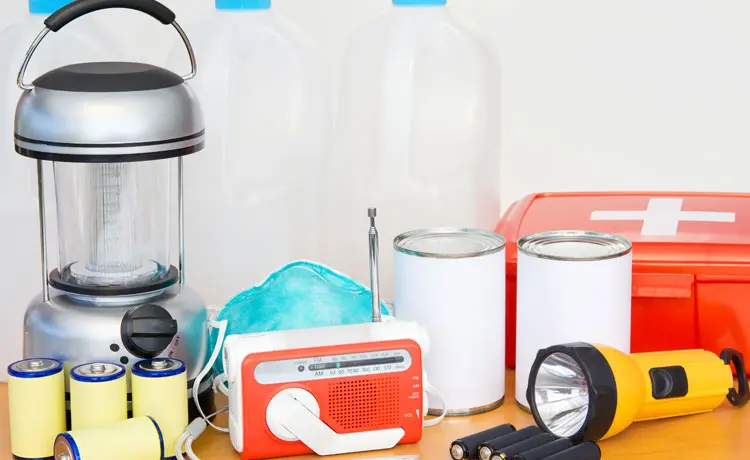Emergencies and disasters can happen suddenly and have devastating consequences. Quite often, people who consider themselves “prepared” aren’t as prepared as they think. Is your community prepared for the unexpected? Get started now and inform citizens today with a few helpful basic emergency preparedness tips that won’t leave them in the lurch. These handy checklists will help families in your community take crucial steps towards preparing for an emergency.
Building an Emergency Supply Kit: A Quick Checklist
Households should assemble a 3-day disaster supply kit to see them through until help arrives. Each family member should know the location of the kit and be able to access it easily. What should an emergency supply kit include? At a minimum, the kit should include water, food, a first aid kit, tools, sanitation and hygiene items, clothing and bedding. Below is a list of suggested items. For more ideas, visit Ready.gov.- 3-day supply of water and nonperishable food
- Portable, battery-powered radio or TV and extra batteries
- Flashlight and extra batteries
- Sanitation and hygiene items (moist towelettes and toilet paper)
- Matches in a waterproof container
- Whistle to call attention
- Extra seasonal clothing
- Kitchen accessories and cooking utensils, including a can opener
- Cash and change
- Special needs items, such as prescription medications, eyeglasses, contact lens solutions and hearing aid batteries
- Cell phone with charger or solar charger
- First aid kit (see below)
- Essential documents (copies of passports, driver’s licenses, Social Security cards and other forms of ID; wills; birth and marriage certificates; insurance policies)
Maintaining an Emergency Supply Kit
Once emergency supplies are put together, it’s important to maintain them so they’re safe to use if needed. Here are a few things to consider:- Keep canned goods in a cool, dry place and throw out swollen, dented or corroded cans.
- Store boxed foods in tightly sealed plastic or metal containers.
- Use foods before they go bad, and replace them with new supplies.
- Rethink needs every year and update the kit as your family’s needs change.
- Seal items in airtight plastic bags and put your entire disaster supply kit in one or two easy-to carry
- containers, such as an unused trashcan, camping backpack or duffel bag.
- Change stored food and water supplies every 6 months. Be sure to write the date you store it on each container. Replace items as you use them so your kit is always fully stocked.
Sample First Aid Kit
It’s a good idea to have several first aid kits: one for the home and one for each car.- Various shapes and sizes of adhesive bandages, dressings and gauze pads
- Rolls of 3” cohesive bandage and 2” adhesive tape
- Germicidal hand wipes or alcohol-based hand sanitizer
- Sterile gloves (i.e., latex gloves)
- Cold pack
- Cotton balls
- Sunscreen
- First aid manual
- CPR breathing barrier
- Tongue blades and wooden applicator sticks
- Antibacterial, antibiotic and burn ointments
- Cleansing agent (soap)
- Scissors, needles, tweezers and safety pins
- Thermometer and petroleum jelly or other lubricant
- Aspirin and non-aspirin pain relievers
- Anti-diarrheal medication, antacids and laxatives
Tailor Emergency Kits for Specific Needs
When building any emergency supply kit, consider the particular needs of family members.- Items for infants and children (e.g., infant formula, diapers, wipes, books, board games)
- Items for pets (e.g., leash, pet carrier)
Have a Family Evacuation Plan
If disaster strikes, families should have an evacuation plan and know how to shelter-in-place. Planning for different situations can include what to do when everyone is at home and what to do when family members are at work or school. It’s also important to consider how to communicate and reunite in different situations. As early as possible, teach children the basic information they need to know:- Their home address, phone number and parents’ full names
- How and when to call 911 and other emergency numbers
- Who to contact if they can’t reach either parent (names, phone numbers, addresses)
- Family meeting places
